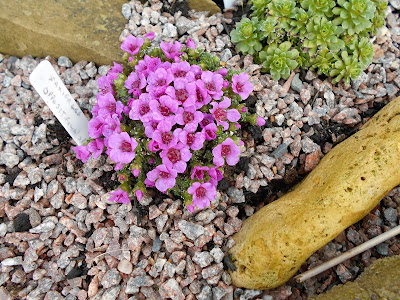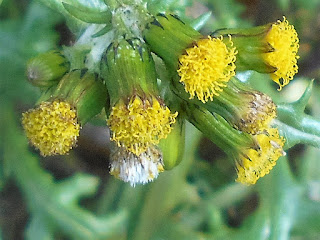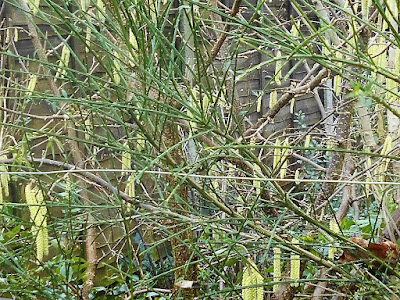 |
| Holy Cross Church, Daventry. 28 February, 2017 |
The churchyard too has a generally tatty appearance, exacerbated by litter, and a walk through the area tends to be a depressing rather than a rewarding experience. So when I took a short cut through there earlier today I was not optimistic; coke cans and crisp bags may display all the colours of the rainbow but they are hardly spiritually uplifting.
 |
Snowdrops in the grass. Holy Cross Church, Daventry,
28 February, 2017
|
Drifts of snowdrops were to be expected; they are currently everywhere and barely merit comment. A rather more unexpected sight was a lovely patch of cyclamens beneath the lime trees. Only a quick look at the leaves was needed to show that they were specimens of the Eastern Sowbread, Cyclamen coum, a native of the Turkish and Caucasus mountains as far east as Iran.
 |
Cyclamen coum in the churchyard, Holy Cross Church, Daventry.
28 February, 2017
|
An earlier name for this species was Cyclamen orbiculatum and the rounded leaves, so different from the Common Sowbread, Cyclamen hederifolium, meant that the earlier name was much more appropriate. But the rules of botanical nomenclature must prevail...
 |
The orbicular leaves of Cyclamen coum, Holy Cross churchyard, Daventry.
28 February, 2017
|
The Common Sowbread is widely naturalised in Great Britain and in fact John Hutchinson (British Wild Flowers, Penguin Books, 1955 edition) harboured a suspicion that it could be a British native. John Gerard, in his Herball or Generall Historie of Plants, published in 1597 is the first to mention it as occurring in Britain. Maps provided by The National Biological Network on their 'Gateway' site show 1485 records for naturalised Cyclamen hederifolium but only 139 for C. coum; understandably records for both these species are overwhelmingly in the south of Britain.
 |
Cyclamen hederifolium. The specific name means 'ivy leaved'. Our garden at
Stefen Hill, Daventry. 28 February, 2017 |
The leaves of these two primrose relatives are very distinctive and, before leaving the churchyard another plant was displaying equally unmistakeable leaves. The purple-brown spots on the leaves of Lords and Ladies explain the plant's Latin name of Arum maculatum and they are always among the first to appear in the spring - although they do not always bear spots.
 |
Spotted leaves of Arum maculatum. Holy Cross churchyard, Daventry.
28 February, 2017
|
It is the flowers, arriving a couple of months later, that have given rise to so many vernacular names which are, as John Lewis -Stempel points out in his lovely book 'Meadowland', (Doubleday Books, 2014) 'are of an eye-winking Carry-on standard'. Most obliquely or more directly refer to the ithyphallic form of the spadix: some, such as Wake Robin and Cuckoo Pint, appear innocuous enough - until we remember that Robin was the medieval equivalent of 'Dick' and Pint is short for pintle, meaning penis (the word 'pint' as used here rhymes with 'mint'). How good it was to leave the saucy environs of the church and breathe in wholesome air! I arrived home to find that a gorgeous plant of Saxifraga oppositifolia was flowering in our sink garden. Now that was uplifting.
 |
Saxifraga oppositifolia in our garden at Stefen Hill, Daventry.
28 February, 2017
|












































